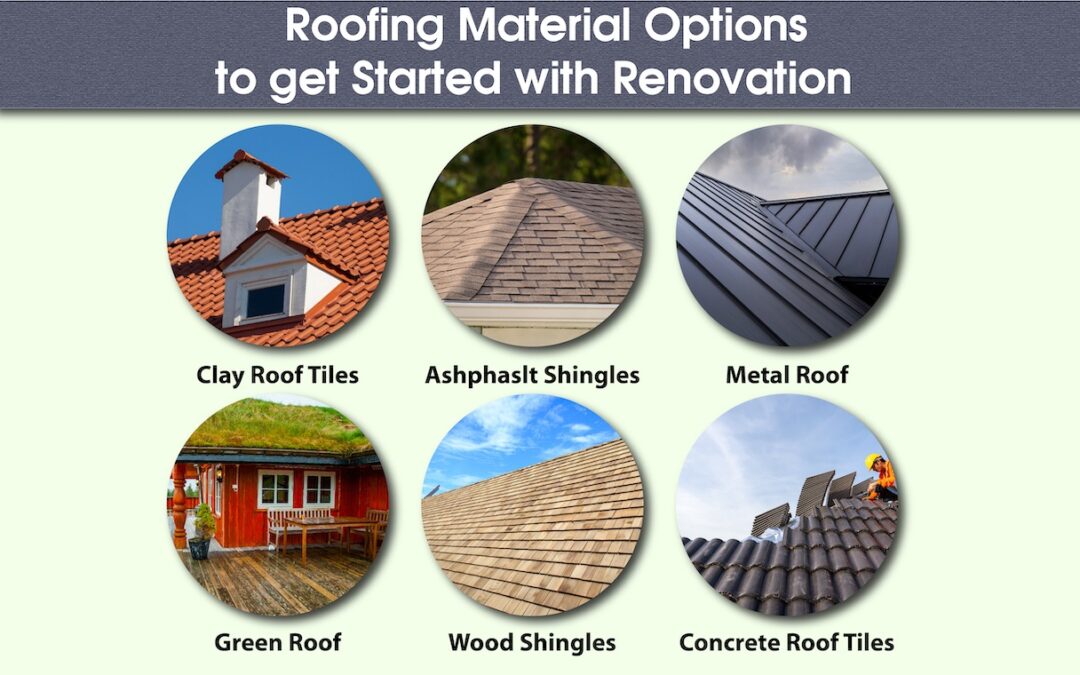Selecting the right roofing material is crucial for both the look and functionality of your home. With many roofing options available, it can be overwhelming to choose the best one. This guide breaks down the most popular roofing materials, highlighting their benefits and considerations to help you make an informed decision.
Asphalt Shingles
Overview
Asphalt shingles are a popular choice due to their affordability and ease of installation. They come in two main types: organic and fiberglass.
Benefits
-
-
- Cost-Effective: Asphalt shingles are generally more affordable than other roofing materials, making them ideal for budget-conscious homeowners.
- Variety: Available in a wide range of colors and styles, asphalt shingles offer flexibility in design.
- Durability: With proper care, asphalt shingles can last between 15 to 30 years.
-
Considerations
While cost-effective, asphalt shingles may not perform as well in extreme weather conditions compared to other materials. For more detailed information on asphalt shingles, you can visit the National Roofing Contractors Association (NRCA) – Asphalt Shingles or check out Energy Star’s roofing materials guide.
Metal Roofing
Overview
Metal roofing is known for its durability and resistance to harsh weather conditions. It comes in several types, including steel, aluminum, and copper.
Benefits
-
-
- Longevity: Metal roofs can last between 40 to 70 years, depending on the metal type.
- Durability: Highly resistant to wind, hail, and fire.
- Energy Efficiency: Reflects solar radiant heat, reducing cooling costs in hot climates.
-
Considerations
Metal roofing has a higher upfront cost compared to asphalt shingles but offers long-term savings through its durability and energy efficiency. For more insights into metal roofing, visit the Metal Roofing Alliance or learn about metal roofs’ energy efficiency on the U.S. Department of Energy’s website.
Clay and Concrete Tiles
Overview
Clay and concrete tiles are known for their durability and aesthetic appeal, often used in Mediterranean and Spanish-style homes.
Benefits
-
-
- Longevity: These tiles can last between 50 to 100 years with proper maintenance.
- Fire Resistance: Highly resistant to fire.
- Energy Efficiency: Excellent insulation helps regulate indoor temperatures.
-
Considerations
Clay and concrete tiles are heavy and may require additional reinforcement. They can also be more expensive. For detailed information on these materials, refer to the Tile Roofing Institute or check the International Code Council (ICC) – Roofing Materials for code requirements.
Wood Shingles and Shakes
Overview
Wood shingles and shakes provide a natural, rustic look, commonly used in traditional and historical homes. Shingles are machine-cut and uniform, while shakes are hand-split for a more textured appearance.
Benefits
-
-
- Aesthetic Appeal: Offers a unique and attractive look that enhances curb appeal.
- Insulation: Wood is a natural insulator, aiding in temperature regulation.
-
Considerations
Wood shingles and shakes require regular maintenance to prevent issues like rot and insect damage. They generally have a shorter lifespan, lasting 20 to 30 years. For further details, visit the Cedar Shake & Shingle Bureau or the National Park Service’s guide on historic wood roofs.
Slate Roofing
Overview
Slate roofing is a premium option made from natural stone, known for its longevity and beauty. It’s often used in high-end homes.
Benefits
-
-
- Durability: Slate roofs can last over 100 years with proper care.
- Aesthetic Appeal: Offers a timeless and elegant appearance.
- Fire Resistance: Highly resistant to fire.
-
Considerations
Slate roofing is expensive and requires a strong roof structure due to its weight. Professional installation is essential for ensuring durability. For more information, visit the Slate Roofing Contractors Association (SRCA) or the Natural Slate Association.
Conclusion
Choosing the right roofing material involves considering your budget, climate, and personal preferences. Each roofing type has unique benefits and drawbacks. For personalized advice and to ensure you select the best option for your home, schedule a FREE roof inspection with our experts. We’re here to help you make the best choice and answer all your roofing questions.

